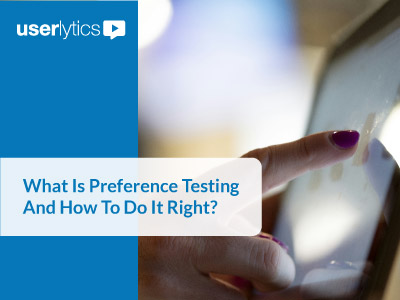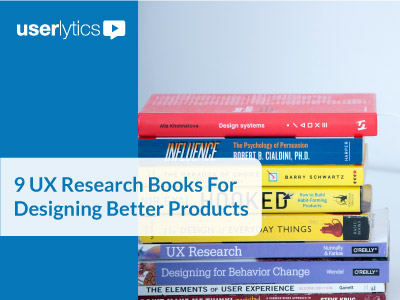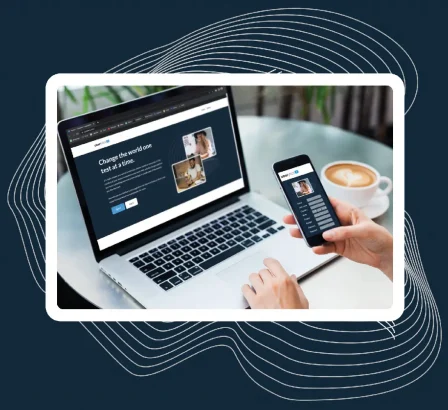
Top 10 UX Research Tools
UX designers strive to create intuitive, seamless, and delightful experiences for users testing websites, mobile apps, or prototypes
And one of the key components in achieving this goal is user research, a crucial phase where UX experts strive to understand users, their needs, motivations, behaviors, and preferences.
The realm of UX research tools has expanded rapidly, offering a diverse array of options to suit different testing requirements.
From traditional usability testing to remote user research and beyond, UX designers now have a plethora of alternatives at their disposal.
In this blog post, we embark on a journey to explore the rich landscape of UX research tools —analyzing those that empower UX designers in their pursuit of excellence.
Whether you are a seasoned UX designer looking to improve your usability test approach, or a newcomer eager to learn about the possibilities, this guide will equip you with the knowledge to make informed decisions and select the right tools for your needs.
What to Consider When Deciding on UX Research Tools?
There are a number of dimensions and trade-offs to consider when choosing any of the UX research tools currently available on the market. It is important to identify your specific needs, and look for features that really make the difference.
Affordability and scalability

A key consideration: Is the pricing model seat/account based, or usage based? If it is the former, you can quickly rack up expenses as you start to scale usage across the organization.
Whereas with the latter, you (typically) have no cost for additional seats/accounts, whether user, admin or super admin.
One thing to watch out for: Those based on seats/accounts typically promise “unlimited” tests/studies/research participants sessions within each account.
However, when it comes down to it, these types of pricing plans are not at all “unlimited” usage. And since these types of plans require you to pay per each seat/account, you can end up paying a bundle!
User ratings and feedback
User ratings are a key factor to determine which tool for UX research to use. Users who have had experience with the features usually offer valuable feedback to support your choice. So, check out G2, Capterra, Google Play and the App Store for ratings, including for areas that may be important for you such as customer service, product roadmap direction, participant panel quality, and more.
All-in-one solution
This is a key tradeoff in user research tools. Do you want a “Best in Class” solution that only leverages one or two methodologies (e.g.: Card Sorting & Tree Testing and no panel in the case of OptimalSort), or you go for a holistic “all in one” solution, with excellent usability and a large proprietary panel?
Ease of use
Funnily enough, some of the UX research tools out there could use a lot of usability testing on themselves! That said, some of them have been improving their user friendliness in the last 12 months. Make sure you read up on reviews that address each platform’s ease of use when making your selection.
No installation required
This is crucial if you are looking for any of the following: 1) B2B testing (i.e.: access participants behind the firewall), 2) a target B2C Persona with an extremely easy and seamless participant onboarding, and/or 3) maximizing the use of your own participants. Even better if no plugin, extension or similar is required, and onboarding is 100% in-browser!
Flexible, mixed method testing options
This goes back to the previously mentioned point of whether you are looking for specialized UX research methods or a wide variety of holistic choices: do you need a mix of quantitative, qualitative, usability, information architecture, moderated, and unmoderated methodologies?
Professional peer support

The old adage of bad data input equals bad data output applies. If the study script and/or analysis is not done by experts, or you simply do not always have the time to do so on your own, having an (optional) team of senior UX Research consultants on hand is a great benefit to look for.
Worldwide panel of testers
If you are looking to conduct international testing —most companies will need to sooner or later— having a global panel, expertise, and translated UIs along with multilingual transcriptions is a great asset to leverage.
Democratized user research
Very much in vogue right now; if you want to extend the benefits of the testing tools across multiple departments and users in your organization, is the platform you choose set up for that? Does it allow, for example, for unlimited seats and accounts at no extra cost?
The Top 10 Usability Testing Tools – Analysis
Testing tools is a dynamic realm with existing solution constantly improving their functionalities. At Userlytics, we list and analyze the best testing platforms in terms of advantage and drawbacks, and include key verbatims from existing users.
1. Userlytics

Userlytics is a full featured state of the art user experience research platform with a global participant panel of more than 1.6 million respondents.
Unlike many other UX testing tools, Userlytics promises an “all-in-one” experience – that means that clients can recruit participants, and carry out testing and analysis needs in one place, simplifying the process of democratizing user research.
Since 2009, Userlytics has been helping enterprises and agencies improve the user and customer experience of their websites, mobile apps and prototypes.
With a scalable pricing model and a diverse worldwide panel, Userlytics allows brands to run both moderated and unmoderated usability studies with as many or as few participants as they choose.
In addition to its testing services, Userlytics offers a variety of optional UX Consulting services including senior UX Consultants in both Europe, Canada and the U.S. who can help clients achieve actionable UX insights.
Pros of Userlytics
- Unlimited access at no additional cost – Collaborate with your entire team for no extra fees. Userlytics has no restrictions on the number of team members or seats you can include. Whether 1 teammate, or 200 colleagues, feel the impact of truly democratized research.
- Professional peer support – Userlytics’ UX Consulting team enriches your testing experience, offering complete support from test planning, moderation of live conversations, and insight analysis with detailed recommendations – all dedicated to helping clients maximize their approach to UX research.
“The level of engagement and expertise delivered by Userlytics team we received, helped us to successfully run a series of moderated tests in a very tight and time-sensitive schedule.”
Cons of Userlytics
- Longer wait times for niche profiles – For very specific participant profiles, the wait time to results may be slightly longer to allow our recruitment team time to secure the perfect study participants.
- Rapidly evolving platform – The product is rapidly evolving with new system updates, tools and capabilities, which means the client interface may appear different from time to time.
2. UserTesting

According to G2, UserTesting is a leader in video-based human insight, enabling organizations to understand what it’s like to be their customer. UserTesting is headquartered in San Francisco, California, and has more than 2,500 customers.
The platform offers various types of tests, including moderated and unmoderated remote usability tests, prototype testing, concept testing, and survey-based studies.
The tests can be customized to match specific objectives and target audience profiles.
UserTesting provides features to facilitate collaboration and analysis, such as video playback, highlighting and annotation tools, note-taking, and sharing capabilities.
This allows teams to collaborate, gather feedback, and derive meaningful insights from the collected data.
The service provided by UserTesting is designed to be user-friendly and accessible for both small and large organizations. It aims to make user testing more efficient, scalable, and cost-effective by leveraging remote testing capabilities.
Pros of UserTesting
- Big industry name – UserTesting is one of, if not the largest UX research tool on the market. UserTesting boasts many well-known, large clients because of this.
- Quick results – A large panel of participants allows clients to get results back very quickly.
Cons of UserTesting
- Its systems and processes encourage the appearance of Professional Testers – UserTestings’ platform makes it easy for participants to “cheat” on tests —e.g.: instant notification of available tests regardless of profile, no IP verification, easy to cheat screeners, no QA verification of results— and thus may diminish the quality of UX insights.
- Clunky experience – According to G2 comments, the testing tool, while full of many different UX capabilities, can run slow. The menu options are somewhat hard to find and it takes a few times to remember all the settings and how to adjust them (G2).
- Per seat/account pricing – Can get extremely expensive with teams larger than a 1 person team
“Powerful synthesis, but an overall clunky experience”
3. UserZoom

UserZoom streamlines the research process so you can produce high-quality research, fast, consistently, and at scale—at every stage in the product development lifecycle.
Userzoom allows clients to gain confidence in digital experience decision-making by demonstrating the impact of UX on business goals, and creating better digital experiences for customers.
The user research and usability testing platform allows businesses and UX professionals to conduct research studies to gather insights about user experiences.
It offers a range of features and functionalities to facilitate remote and in-person research, usability testing, and user feedback collection.
The platform provides various research methodologies, including online surveys, card sorting, tree testing, click testing, and task-based usability testing.
These methods help researchers evaluate user interactions, understand user preferences, and identify usability issues.
UserZoom caters to a wide range of industries and has been utilized by UX researchers, designers, and product managers to gain a deep understanding of user behaviors and preferences.
It offers enterprise-grade solutions for large organizations as well as plans suitable for individual researchers and small teams.
Pros of UserZoom
- Responsive tech support team – G2 users report quick, efficient responses from the company’s tech support team.
- Bring your own testers for free – All monthly plans allow you to use your own participants for your study at no extra cost.
Cons of UserZoom
- Small panel – UserZoom’s panel of participants is quite small, forcing them to rely on 3rd party platforms not set up for UX type studies, meaning clients are not always able to target niche, or international users.
- Limited number of participants and studies – Clients are capped on the number of participants they can invite to a study and the number of studies they are able to launch at a given time.
- Per seat/account pricing – Can get extremely expensive if you are larger than a 1 person team.
4. PlaybookUX

PlaybookUX is a user research platform that focuses on providing tools and features for conducting remote usability testing and user interviews.
It aims to streamline the user research process, making it easier for UX researchers and designers to gather valuable insights from participants.
PlaybookUX offers features such as video-based user testing, screen and audio recording, real-time transcription, note-taking, and task-based testing.
These features allow researchers to observe participants’ interactions with a digital product or prototype and capture their feedback and thoughts during the testing session.
The platform also supports remote user interviews, allowing researchers to conduct one-on-one conversations with usability testers and gather qualitative insights about their experiences and perceptions.
Additionally, the platform offers participant recruitment services, providing access to a pool of pre-screened participants who can be targeted based on specific demographics and criteria.
- Affordable tool – Compared to some of the more complete and full featured UX testing tools on the market.
- Well designed platform – Users report that Playbook UX has a well designed user interface that is easy to navigate.
“It is a very well-designed UI speaking. The way I can share with my team the initial results of their hypothesis.”
Cons of Playbook UX
- Fake profiles – According to G2, there are many fake profiles within Playbook UX’s recruitment panel. This can damage the integrity of your study results. This is probably because of a small panel
- Only offers webcam recording for moderated sessions – Unlike full featured user testing tools, Playbook UX only offers webcam recording during moderated sessions, leaving a gap for important user insights that can only be captured via video.
“The integrity of the recruitment panel has also come into question as we’ve been running into an unusually high number of fake profiles.”
– G2
5. Userbrain

Userbrain is a usability testing tool that enables businesses and UX professionals to gather feedback and insights from real users about their websites, prototypes, or mobile apps.
It offers remote usability testing services, allowing researchers to observe and analyze how users interact with their digital products.
With Userbrain, researchers can define tasks and scenarios for participants to complete while their screen and audio interactions are recorded.
Users’ actions and feedback are captured, providing valuable qualitative insights into the user experience.
The platform offers a pool of pre-screened participants who can be selected based on specific demographics and criteria. This allows researchers to target their desired user groups for testing.
Userbrain provides a user-friendly interface for designing and launching tests, and it supports both moderated and unmoderated testing.
It offers features such as video playback, task completion metrics, and note-taking capabilities to facilitate analysis and collaboration among team members.
Pros of UserBrain
- Quick setup – According to a G2 user, UserBrain’s interface allows for a quick and simple study setup.
- Good customer service – UserBrain’s small team allows for consistent client interaction and assistance.
Cons of UserBrain
- Limited international panel – UserBrain’s international panel only has participants based in the U.S., Canada, UK, Austria and South Africa.
- No ISO 27001 Certification – UserBrain does not have their ISO 27001 certification, the top internationally recognized specification for an Information Security Management System, or SOC Type II. This could leave their clients and users and associated data vulnerable to cybersecurity threats.
6. UserFeel

UserFeel is a remote usability testing platform that allows businesses and UX professionals to gather user feedback and insights about their websites or prototypes.
It provides a platform for conducting usability tests with real users, offering valuable insights into the user experience.
With UserFeel, researchers can define tasks and scenarios for participants to complete while their screen and audio interactions are recorded. Users are encouraged to think aloud and express their thoughts and feedback during the testing process.
The platform offers a global panel of pre-recruited participants who can be selected based on specific demographics and criteria.
This allows researchers to target their desired user groups and obtain feedback from a diverse range of perspectives.
The feedback and insights gathered through UserFeel can help identify usability issues, uncover user preferences, and validate design decisions.
This enables businesses and UX professionals to make informed improvements to their digital products and create a better user experience.
Pros of UserFeel
- No subscription or monthly fees – UserFeel states that it requires no subscription or monthly fees to get unlimited access to all features, with no hidden upgrade fees.
- Ready made templates – Userfeel has ready-to-use templates with common tasks, questions and ratings that help clients create moderated or unmoderated studies quickly.
Cons of UserFeel
- Clunky participant onboarding – Reviewers have commented that instead of diving right into a study, participants are required to download a desktop app before they can begin a study, which leads to participant drop-off.
- No dedicated account manager – UserFeel clients are not assigned a dedicated account manager, resulting in a less personalized and immediate customer support.
7. Lookback

Lookback is one of several UX research tools that specializes in remote user testing software and qualitative research for digital products and services
It provides tools and features that enable UX researchers and designers to conduct user interviews, usability tests, and remote research studies to gather valuable insights from participants.
With Lookback, researchers can schedule and conduct remote user interviews or usability tests with participants located anywhere in the world.
It’s one of several testing tools that offers video and audio recording capabilities, screen sharing, and real-time collaboration features, allowing researchers to observe participants’ interactions and gather qualitative data.
Lookback supports both moderated and unmoderated research sessions. In moderated sessions, researchers can guide participants through tasks and ask follow-up questions, while unmoderated sessions allow participants to complete tasks independently.
Like other testing tools, it aims to streamline the user research process, allowing UX professionals to gain a deep understanding of user behaviors, preferences, and pain points.
The insights obtained through Lookback can inform design decisions, identify usability issues, and drive improvements in the user experience of digital products and services.
Pros of LookBack
- Dedicated account manager – Like Userlytics, LookBack provides each of its clients with a dedicated account manager.
- Invisible observers – Like Userlytics, LookBack allows invisible observers during moderated sessions, allowing the whole team to privately chime in to the Moderator during moderated sessions, suggest questions, and make observations.
Cons of LookBack
- No scheduling feature – Unlike some UX research tools, LookBack does not offer an integrated scheduling feature for moderated testing, which may make scheduling moderated sessions more tedious for clients.
- No QA review of panel results – LookBack does not provide quality assurance reviews of study session results, which may result in low-quality results and thus, faulty insights.
8. TryMata (Formerly TryMyUi)

TryMata (formerly TryMyUI) is a remote usability testing platform that offers affordable, cross-platform services for testing and improving the user experience. People in a client’s target audience provide narrated video feedback and written survey responses.
Clients can watch videos of real people using their website or app to see where (and why) users get frustrated, lost, or confused.
The platform offers a pool of pre-screened participants who can be selected based on specific demographics and criteria.
This allows researchers to target their desired user groups and obtain feedback from a diverse range of perspectives.
TryMata provides a user-friendly interface for designing and launching tests, and it offers features such as video playback, heat maps, written responses, and usability metrics.
These features facilitate analysis and provide actionable insights to improve the user experience.
The tool also offers a collaborative environment, allowing researchers and stakeholders to share and discuss test findings, collaborate on insights, and track design iterations
Pros of TryMata
- Small team – The small team at TryMata provides a more intimate, personalized experience for clients.
- Free trial offering – TryMata offers clients a two-week free trial complete with five user tests to see if the platform is a good fit.
Cons of TryMata
- Limited screener questions – TryMata places a cap at 16 screener questions. While this may be more than enough for some clients, clients with a very niche target audience may require more screener questions.
- No native tree testing and card sorting tools – In order to utilize tree testing and card sorting functionalities during a study, users need to exit the testing environment, which could make the testing experience more clunky.
9. Optimal Workshop

As a trusted and global leader in tools for information architecture, Optimal Workshop helps organizations build more intuitive and successful digital experiences backed by user research.
The company’s UX functionalities, multiple testing methods, and fast and easy participant recruitment give clients the confidence to deliver robust and actionable insights throughout the entire digital lifecycle to their team.
Pros of Optimal Workshop
- Diverse set of UX tests – Optimal Workshop offers a variety of different testing types to meet a variety of client testing needs.
- Good for wireframe testing – UX designers report that Optimal Workshop is a good tool for iterative wireframe testing.
Cons of Optimal Workshop
- No custom recruitment – Optimal Workshop does not offer custom participant recruitment, which makes it difficult for clients with niche customer bases to target the right participants.
- No UX Consulting team – Optimal Workshop’s client guidance and support does not extend to a full-fledged team of UX researchers, ready to provide guidance through the creation of study scripts, expert advice, and analysis and reporting.
10. DScout

Dscout is a qualitative remote research platform for unlocking in-context user insights. Hundreds of the world’s most innovative companies trust our suite of remote research tools to collect “in-the-moment” data that reveals their users and transforms their products and experiences.
Pros of DScout
- Automatic video transcriptions – Like Userlytics, DScout’s platform has an automated video transcriptions tool, allowing for quicker review of study sessions and videos.
- Good pool of U.S. participants – DScout clients report that their panel of U.S. participants is high quality.
Cons of DScout
- Mostly U.S. panel participants – DScount’s panel of participants is located mostly in the U.S., making it challenging to conduct international US studies.
- Reportedly high costs – According to G2 users, DScout’s costs are quite high for smaller teams.
“The cost is astronomical, too high for a small agency. It’s also not an all-inclusive price, so you get charged for things like labor hours (at $225/hr), which you are required to use in order to run your surveys.”
FAQs
How to choose the best UX research tool?
When deciding on any usability testing tool, it is important that you bear in mind special elements such as:
- Affordability and scalability
- User ratings
- All-in-one solution
- Ease of use
- No installation required
- Flexible, mixed method testing options
- Professional peer support
- Worldwide panel of testers
- Democratized user research
Userlytics ticks all these boxes and will help you improve the UX of your website, app, or prototype. Contact us for help!
How to do successful usability testing?
A usability test involves careful planning, execution, and analysis. Here are some key steps to help you conduct effective usability testing:
- Define Clear Objectives
- Identify User Profiles and Tasks
- Recruit Test Participants
- Create Test Materials
- Conduct the Test
- Observe and Collect Quantitative Data/Qualitative Data
- Analyze the Data
- Extract Actionable Insights
- Communicate Findings
- Iterate and Improve
What is usability testing?

Usability testing is a method used to evaluate the usability and effectiveness of a product, service, website, or application by observing real users as they interact with it.
The goal of usability testing is to identify any usability issues, understand how users navigate and interact with the design, and gather feedback to inform iterative improvements.
Testing tools are essential to carry out this whole process and gather user feedback, identify usability issues, validate design decisions, and ultimately create more user-friendly and effective products, services, websites, or applications.
What are the types of usability tests?
There are several types of usability tests that UX researchers and designers can employ based on their specific goals and research needs. Here are some common types that can be done with usability testing tools:
- Moderated Usability Testing: This involves a researcher or facilitator interacting directly with the participant during the test. The facilitator guides the participant through tasks, asks questions, and gathers feedback in real-time.
- Unmoderated Usability Testing: Participants complete the usability test independently, without direct guidance from a facilitator. They follow pre-defined tasks and provide feedback through recorded sessions or written responses.
- Remote Usability Testing: Participants and researchers are geographically separated. Remote usability testing can be conducted either in a moderated or unmoderated format using video conferencing tools, screen sharing, or specialized remote testing platforms.
- Guerrilla Usability Testing: This type of test is conducted in informal settings, such as public places like coffee shops or libraries. It involves approaching individuals and gathering quick feedback on a product or interface.
- A/B Testing: A/B testing compares two or more versions of a design or interface to determine which one performs better in terms of user behavior, engagement, or conversion rates. Participants are typically unaware they are part of an A/B test.
- Comparative Usability Testing: This type of test involves comparing and evaluating multiple versions or variations of a design to determine which one performs better in terms of usability and user experience.
- Exploratory Usability Testing: This approach focuses on allowing participants to freely explore a product or interface without strict task guidelines. The goal is to uncover user insights, discover unexpected usability issues, and gather feedback on overall user experience.
- Accessibility Testing: This type of testing specifically evaluates the usability and accessibility of a product for individuals with disabilities. It ensures compliance with accessibility standards and identifies barriers that may hinder user interactions.
Conclusion and key takeaways
A revolution
The evolution of UX research tools has witnessed exciting innovations, such as AI-powered analytics, eye-tracking technologies, and collaborative platforms. These advancements continue to revolutionize the way usability test is done.
UX research tools also include understanding user behavior, and enabling designers to glean deeper insights into user interactions, emotions, and preferences. However, it is essential to remember that selecting the “best” user testing tool depends on individual contexts and project requirements.
Top 10 UX Research Tools
Effective use
What works well for one designer or organization may not necessarily be the ideal choice for another. It is crucial to assess each tool in relation to specific needs, team dynamics, and budgetary constraints.
The key to harnessing the power of UX research tools lies not just in their selection but also in the effective utilization of the insights they provide.
Through well-planned usability testing, we can uncover valuable user feedback, identify pain points, and make iterative improvements that elevate the user experience to new heights.
Interested in UX Testing?
Data Visualizations
Top 10 UX Research Tools
Top 10 UX Research Tools
About the Author: Elise Rodriguez

Elise is the Editor of Content and Communications at Userlytics. Prior to joining Userlytics’ content team, Elise worked in the public relations field, and helped develop communications materials for companies in a variety of industries, including health and beauty, travel / transportation, and sports / entertainment. Elise has her BS in public relations, and her Master’s degree in business management. When Elise isn’t writing about new product features at Userlytics, she enjoys singing and making music, yoga, and spending time at home with her two cats.
Read More Articles by EliseTop 10 UX Research Tools, Top 10 UX Research Tools, Top 10 UX Research Tools, Top 10 UX Research Tools, Top 10 UX Research Tools, Top 10 UX Research Tools, Top 10 UX Research Tools, Top 10 UX Research Tools




